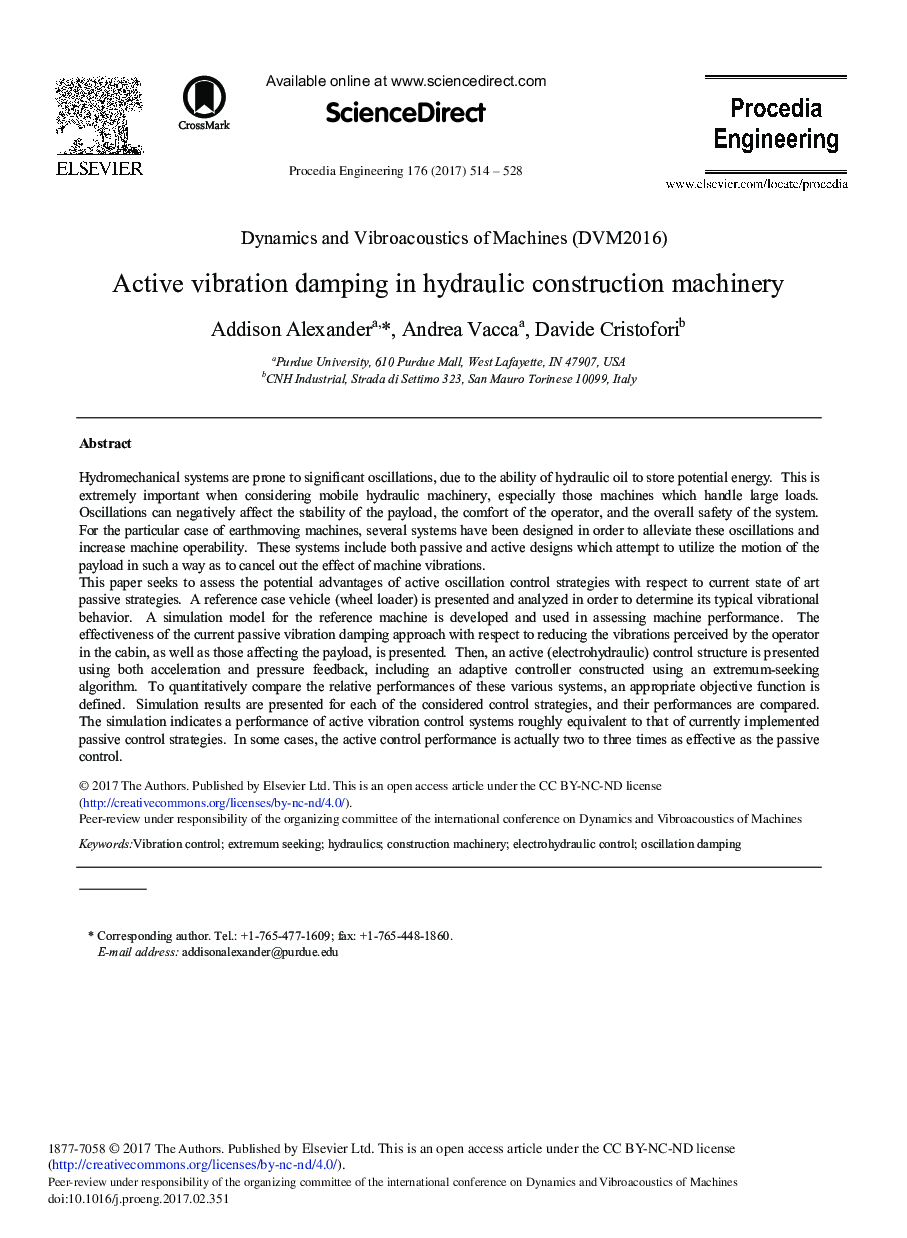| Article ID | Journal | Published Year | Pages | File Type |
|---|---|---|---|---|
| 5028082 | Procedia Engineering | 2017 | 15 Pages |
Hydromechanical systems are prone to significant oscillations, due to the ability of hydraulic oil to store potential energy. This is extremely important when considering mobile hydraulic machinery, especially those machines which handle large loads. Oscillations can negatively affect the stability of the payload, the comfort of the operator, and the overall safety of the system. For the particular case of earthmoving machines, several systems have been designed in order to alleviate these oscillations and increase machine operability. These systems include both passive and active designs which attempt to utilize the motion of the payload in such a way as to cancel out the effect of machine vibrations.This paper seeks to assess the potential advantages of active oscillation control strategies with respect to current state of art passive strategies. A reference case vehicle (wheel loader) is presented and analyzed in order to determine its typical vibrational behavior. A simulation model for the reference machine is developed and used in assessing machine performance. The effectiveness of the current passive vibration damping approach with respect to reducing the vibrations perceived by the operator in the cabin, as well as those affecting the payload, is presented. Then, an active (electrohydraulic) control structure is presented using both acceleration and pressure feedback, including an adaptive controller constructed using an extremum-seeking algorithm. To quantitatively compare the relative performances of these various systems, an appropriate objective function is defined. Simulation results are presented for each of the considered control strategies, and their performances are compared. The simulation indicates a performance of active vibration control systems roughly equivalent to that of currently implemented passive control strategies. In some cases, the active control performance is actually two to three times as effective as the passive control.
